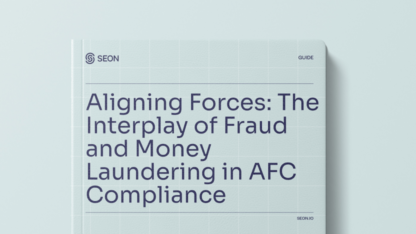Digital banking is increasingly vulnerable to fraud due to the widespread digitalization of financial services. Mobile banking usage rose from 54% in 2022 to 73% last year, with mobile fraud increasing by 30%. Synthetic identity fraud now exceeds $6 billion annually, with average losses of $10,000 per account. Global digital payment fraud losses are projected to surpass $343 billion between 2023 and 2027.
The rise in fraud demands stronger defenses, with transaction monitoring being crucial. It enables real-time scrutiny of transactions to detect and prevent fraud before it leads to financial losses.
The Role of Transaction Monitoring in Banking
Transaction monitoring analyzes each transaction in real-time, detecting anomalies that deviate from usual banking activities. It uses customizable risk scoring models based on factors like amounts, locations, and behaviors, allowing banks to prioritize high-risk transactions for investigation according to their specific risk thresholds.
Transaction monitoring uses advanced technologies like machine learning and AI to improve effectiveness. It enhances fraud detection on a large scale and simplifies decision-making, reducing the need for manual reviews except for flagged cases. By combining digital footprint and device intelligence, transaction monitoring links user data—such as geolocation, device settings, online activities, and social media profiles—to create a detailed user profile. This profile helps monitor banking sessions across all channels and devices, making it easier to identify potential risks.
As digital banking grows, transaction monitoring is essential. Using advanced algorithms, it alerts banks to high-risk activities like suspicious transfers or unusual logins, enabling quick preventative actions. This approach safeguards the integrity of digital banking and ensures compliance with regulations to prevent financial crimes like money laundering.
Best Practices for Fintechs
Transaction monitoring is an essential component for fintech companies. It serves as a cornerstone in both compliance and fraud prevention efforts, both vital in the fast-paced environment of fintech transactions. Regarding compliance, transaction monitoring can assist fintech in adhering to anti-money laundering (AML) regulations and other legal mandates. By performing thorough screenings of transactions, continuously monitoring and aiding in the necessary reporting of any suspicious activities, transaction monitoring is integral to identifying and managing risks related to money laundering, terrorist financing and other illegal activities.
For optimal results, fintechs should opt for transaction monitoring solutions that offer real-time capabilities, adaptability to scale with business growth and seamless integration with existing systems, ensuring they remain equipped to tackle the evolving challenges of financial crime.
Block suspicious users in an instant and prevent fraud with AI
See Solution
Transaction Monitoring for Financial Services
Transaction monitoring is critical to AML and counter-terrorist financing (CTF) efforts in financial services. It involves the continuous surveillance of customer transactions to detect suspicious activities. Financial institutions can effectively identify patterns and anomalies that suggest illicit behavior by leveraging comprehensive transaction data. This vigilance is crucial, especially as financial crime tactics become more sophisticated and pervasive.
Effective transaction monitoring systems are designed to be dynamic and responsive, adapting to new fraud methodologies and the latest regulatory updates. These systems must not only track the usual parameters of transaction size, frequency and type but also consider more nuanced indicators, such as discrepancies in customer profiles or uncharacteristic cross-border activities. Enhanced by AI and machine learning, transaction monitoring can evolve from reactive protocols to predictive measures, proactively identifying risks before they manifest into more significant issues.
From onboarding to transaction monitoring, SEON reduces your risk exposure and improves your fraud defenses so you can win your customers’ confidence.
Discover More
How Digital Banks Can Protect Themselves – And Their Customers
Digital banks face a substantial challenge due to the immense volume of daily transaction data. To effectively manage this, many are adopting an automated, rule-based approach to transaction monitoring. This method balances the volume of transactions with the system’s efficiency and leverages past learnings to better understand and act against anomalies in customer behavior. As a result, digital banks today are increasingly turning to third-party transaction monitoring software to identify and manage risk more efficiently.
SEON’s Impact on Digital Banking
Prominent digital banking leaders like Revolut and HYPE have adopted SEON to optimize their transaction monitoring processes. SEON enhances its capabilities to monitor the frequency and intensity of suspicious activities effectively as soon as they occur. Digital footprint analysis and device intelligence provide a comprehensive overview of individuals, enhancing institutions’ abilities to respond swiftly and accurately to potential threats. Using SEON, digital banks can improve their operational efficiency and strengthen their defenses against the evolving landscape of financial fraud.
Sources
- BioCatch: 2023 Digital Banking Fraud Trends in North America
- BAI: Fraud trends and fighting back
- American Banker: Report outlines unique fraud risks facing the underbanked








